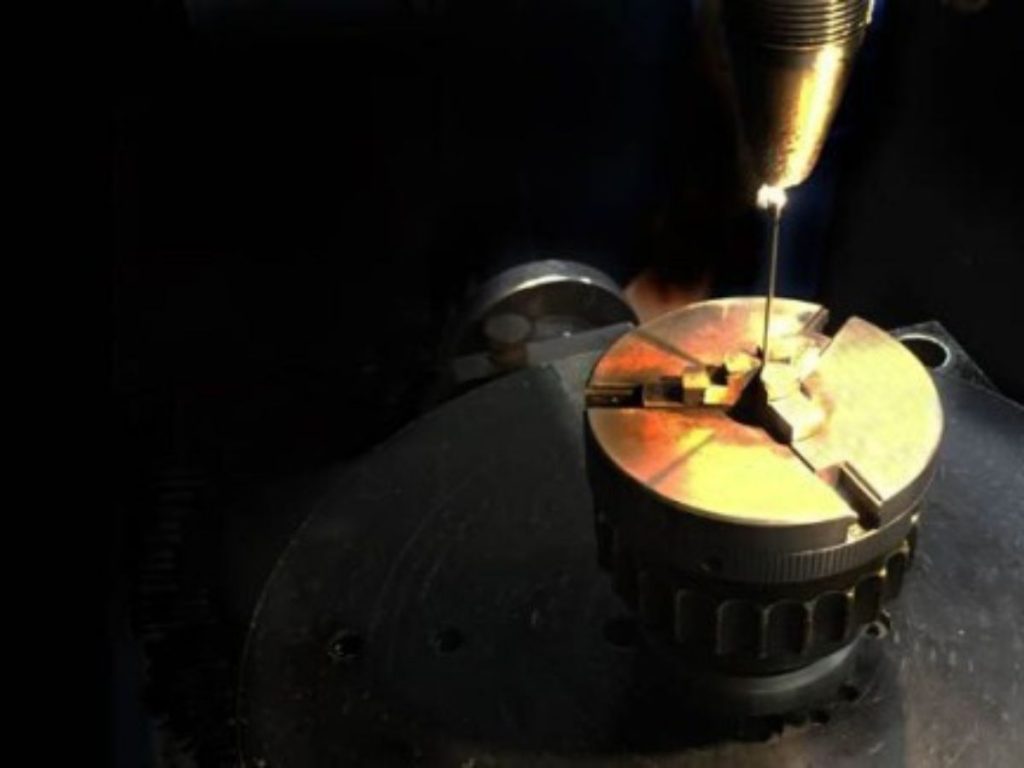What Applications Does EB Welding Have in Industry?
What Industries Use Electron Beam Welding?
EBW uses electrons to form a finely focused beam with enough power density to instantly melt metals. The weld is performed in a vacuum, without filler, in a single pass, and with minimal metallurgical disturbance. EBW remelts parent material in a vacuum, producing high-quality welds with little distortion.
For industries that require strong, dependable joints for complex parts, EBW has numerous applications. These are some examples:
1) Aerospace Production
EBW is frequently used in flight-critical components that require welding. When working with exotic alloys such as titanium and nickel alloys, the method provides low distortion and complete freedom from contamination. The sterile vacuum eliminates the possibility of oxidation, which could weaken the joint. Here are some examples:
- Critical rotating components
- Assemblies of bellows
- Chamber of combustion
- Vanes that guide the blades and the nozzle
- Assembly of bearings (with dissimilar materials)
- Assemblies of gears and shafts
- Repair and salvage of components
2) Automobile/Motorcycle
Many aspects of automotive engineering make use of EBW. EBW can successfully join a diverse range of metals, including alloyed steels and titanium alloys. Parts and assemblies include the following:
- Housings for clutches
- Assembly of gears
- Spur gearing
- Mechanical linkages and suspension members
- Roll bars and torsion springs
- Driveshafts and bearings
- Bottles under pressure
- Lip sealants (welded with a seal in place)
- Shafts to turbine impellers (dissimilar materials)
3) Protection
Defence contracts have some of the most stringent performance standards. EBW is appealing because of its high quality and repeatability. Finish machined and heat treated components can be used to successfully fabricate highly complex projects. Here are some examples:
- Enclosures for high-strength equipment
- Underwater and high-altitude pressure vessels
- Strong structures
- Fuel cells made of titanium
- Launchers and missile casings
- Antennas and radar wave guides
- “Black Boxes” for flight data collection that must be crash-survivable
4) Medical Equipment Production
The autogenous capabilities of EBW, which allow welding without the use of a filler material, ensure the part’s biocompatibility. Medical instruments, surgical tools, and implantable devices are all made of EBW. Here are some examples:
- Implantable spinal devices
- Implants for the fingers and knuckles
- Growers who are invasive
- Hip and elbow joint replacement
5) Oil and gas
Corrosion, pressure, and stress resistance are required in hostile environments. The pin-point beam of EBW responds to this challenge by minimizing the zones affected by the welding heat. When used in conjunction with the single-pass process, this results in high weld integrity and the ability to weld high strength materials. Parts examples include:
- Electrical measurement instruments
- Sensors of pressure
- Sensors for measuring temperature
- Connectors for pipelines
- Sensors for seismic activity
- Turbines
- Drilling equipment
- Assembly of the stator and rotor
6) Power Transfer
Power transmission requires complex assemblies made of disparate materials. Vibration and heat must be tolerated by assemblies. Here are some examples:
- Assays of gear-to-shaft and coupling-to-shaft
- Synchros-to-gears
- Assembly of spur gears
- Double-helical herringbone gears
- Fluid connections
- Sun gear and planet gear assemblies that are epicyclic
- Shaft-to-impellor (dissimilar materials)
- Couplings for driving
7) Nuclear Power Plants
To be supported, this industry requires exceptional quality control and best practice procedures.
Within this industry, typical applications for EB welding include fuel rods, heat exchangers, and nuclear waste containers.
8) Electronic Enclosures with High Strength and Signal Feed-Throughs
EB welding solves the problem of installing sensors and electronics in high strength enclosures for deep water operation. In high strength materials such as nickel and titanium alloys, EBW produces very narrow, low total heat input welds.
Sensitive devices and components can be safely contained in welded enclosures or feed-throughs.
Because EB welding occurs in a vacuum, an evacuated containment can be achieved as a byproduct of the process.
9) Pressurized containers
EBP’s EB welded Pressure Vessels are used in a variety of industries, including:
Subsea defense and oil and gas production
Launch and satellite system space
Installations in aerospace, missiles, and aircraft
Fuel for motorsports and hydraulic equipment
Food and pharmaceutical industries are examples of process industries.
Materials include the following:
Titanium, aluminum alloys, high-performance steels, and nickel-based alloys
10)Environmental Surveillance
CEM (Continuous Environmental Monitoring) is an important and growing requirement.
This may entail placing sensors and filters in extremely harsh environments, necessitating the use of extremely specialized materials.
EBP has manufacturing experience with sensor housings made of high temperature materials such as nickel alloy 718 and C263 for use in high temperature processes.
We have also EB welded sintered micron level filter panels for CEM applications.
11) 3D printing and additive manufacturing (AM)
AM can now be used to create design features in high strength materials that were previously impossible to achieve using traditional methods. The AM process for complex parts is slow and costly, but the unique design features are frequently localised.
To achieve a more cost-effective final assembly, EBW can be used to join AM components to conventionally manufactured parts.
Un-fused powder is present in some AM components and must be removed. EBW can be used to seal powder removal apertures with minimal distortion.

